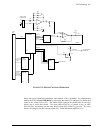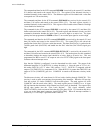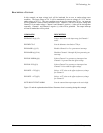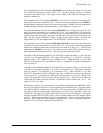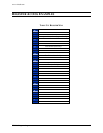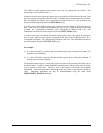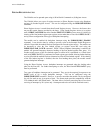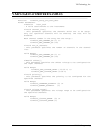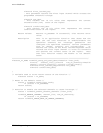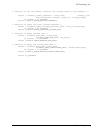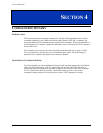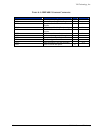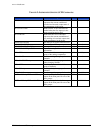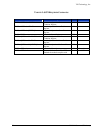
www.vxitech.com
VM4016 Programming 43
PSEUDO REGISTER ACCESS
The VM4016 can be operated upon using (a) Word Serial Commands or (b) Register Access.
The VM4016 allows two types of register accesses (a) Direct Register Access using Hardware
registers (b) Pseudo Register Access. This can be configured using the INHOUSE:PSEUDO
command.
Direct Register Access is much faster than Pseudo Register Access. However, the former does
not provide certain features provided by the latter. Using Pseudo Register Access (a) a register
read of FIRST LATCHED data allow another FIRST LATCHED event to occur (b) allows for
clearing of the first latched register upon register access rather than a Word Serial FETC:LATC?
and (c) allows configuration of the type of backplane interrupting.
The module can be enabled for backplane interrupts using the INHOUSE:REG_ENABLE
command. It can also be done by writing a non-zero value to the Interrupt Enable Register at
offset 0x38 provided the module has been configured for Pseudo register access. The module can
be instructed to clear the first latched register on register access/WS read using the
INHOUSE:CLEAR_LATCH command. When VXIbus backplane interrupting is enabled, the
module will generate interrupts whenever latching of the first latched register takes place. If a
Pseudo register access of the first latched register at offset 0x30 is performed or a Word Serial
read (using FETC:LATC?) is performed, the latch register gets cleared allowing further latching
to occur provided the module has been instructed to clear the first latched register. If the clearing
of the first latched register is disabled, after the first latching takes place, the module cannot
generate backplane interrupts.
Using the Direct Register Access, backplane interrupts are generated when the latching takes
place for the first time. For further interrupting to occur, the Word Serial FETC:LATC? query
must be performed.
Two types of backplane interrupts can be generated. They are (a) the reqt/reqf (in response to an
IACK cycle) or (b) a single backplane interrupt. This can be configured using the
INHOUSE:REGINT command. However, it must be noted that the module can be configured
for only for mode at any given point of time. The former mode provides compatibility with the
VXI standards and is the default mode. The latter allows for faster processing since it cuts down
servicing of interrupts by 50% (since only 1 interrupt needs to be serviced for each latch event).




